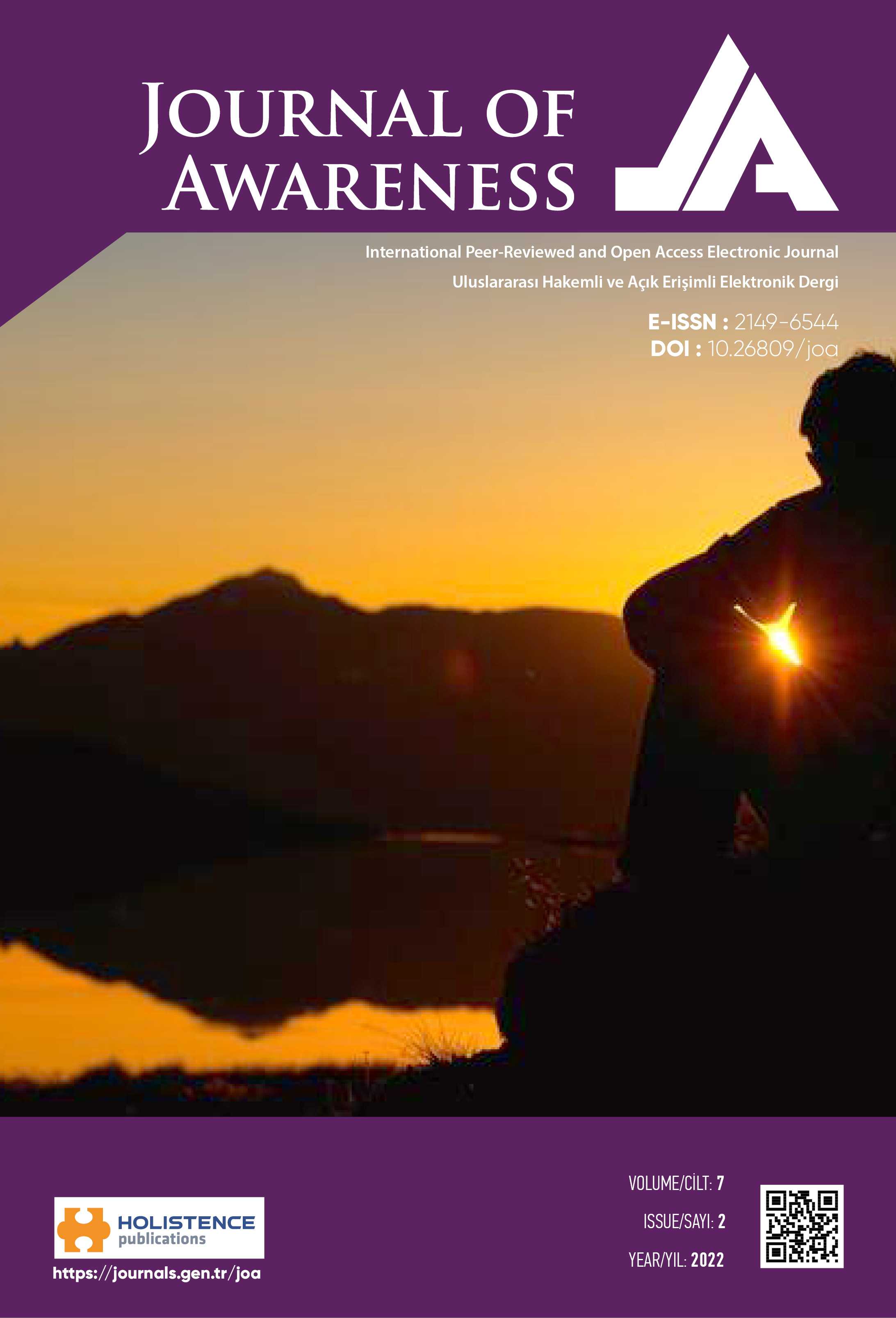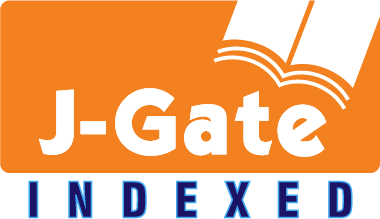A Quest for why gemstones are used for healing
DOI:
https://doi.org/10.26809/joa.7.2.02Keywords:
Gemstones,, Healing Stones, Face-to-face survey, ParticipantAbstract
It is believed that healing power of gemstones increases to the sense of well-being. But it’s unclear how it works. The aim of this study is to investigate the usage of the stones for therapeutic purposes by means of a survey. In this study, a face-to-face survey technique was employed to investigate personal reasons to use the gemstones for healing purposes. After 402 volunteers from various backgrounds were selected and asked them to answer 17 questions, the dataset was analyzed using IBM Statistical Package for the Social Sciences (SPSS). Results showed that women are most interested in gemstones, because they are used for jewellery. The most popular healing stones were Agate, Amethyst, Ruby, Amber and Quartz. Their eye-catching colours together with their healing power that are promoted in social media, strengthen the perception that natural stones can be used for healing or therapy. Healing stones also give spiritual serenity, which is the most important positive effect on people. Some reasons that push people to seek healing from natural stones included hoping of cure, seeking alternative medicine, knowing what specific stones are used as healing tools, searching ways to relieve stress and also protecting against evil spirits. It is stated that people’s hope of cure strengthens the use of these stones as a healing tool.
Downloads
References
ALRECK, P.L. (2004). Settle RB. The Survey Research Handbook. McGraw Hill, 3rd ed., ISBN: 978-0072945485.
ARİF, E.M.M. & HASHİM, H.Z. (2021). Jewellery For Feel and Heal. International Journal of INTI. 25(1), 6-12.
ATODARIA, E., GANDHI, K., RAOLE, V. & MASHRU, T. (2017). Healing Powers of Gem Therapy: An Update. EJPMR. 4(8), 362-375.
BIEMER, P.P., GROVES, R.M., LYBERG, L.E., MATHIOWETZ, N.A. & SUDMAN, S. (2004). Measurement Errors in Surveys. New Jersey: John Willey & Sons, ISBN: 978-0-471-69280-5
BRYMAN, A. (2008). Social Research Methods. Oxford: Oxford University Press, 3rd ed., ISBN: 9780199202959.
CALIK, A., KARACA, O., YASAR, C. & ULUGERGERLI, E.U. (2019). Fake and Synthetic Minerals; A Way to Sustain the Gem Supply. In Environmental Geotechnology. 319-328.
CHADWICK, B.A., BAHR, H.M. & ALBRECHT, S.L. (1984). Social Science Research Methods. NJ: Prentice Hall, Englewood Cliffs, ISBN: 9780138183363.
CHASE, P. & PAWLIK, J. (2002). Healing with Gemstones. New Jersey: Career Press & New Page Books, ISBN: 978-8178088525.
COCHRAN, W.G. (1992). Cox GM. Experimental Designs. New York: Wiley, 2nd ed., ISBN: 978-0471545675.
FINK, A. (2017). How to Conduct Surveys: A Step-By-Step Guide. California: Sage Publications, 6th ed., ISBN: 978-1483378480.
FRIEDMAN, M. (2012). Healing Spaces: Incorporating Gemstone and Chakra Healing into Architecture (MSc Thesis). University of Maryland: College Park's Library Collection.
GAYLE, L.C. (2008). Linking Women to Health and Wellness: Street Outreach Takes A Population Health Approach. International Journal of Drug Policy. 19(3), 205-210, doi: 10.1016/j.drugpo.2008.03.006.
GIENGER, M. & MAIER, W. (2009). Healing Stones for the Vital Organs: 83 Crystals with Traditional Chinese Medicine. Healing Arts Press, 1st ed., ISBN: 978-1594772757.
GGJM-Global Gems & Jewelry Market (2021). Report: Global Gems & Jewelry Market. https://www.researchandmarkets.com/reports/4089890/global-gems-and-jewelry-market-by-type-by, [Date Accessed: 01/10/2021].
GWI-1 Global Wellness Institute (2021). What is Welness? https://globalwellnessinstitute.org/what-is-wellness/, [Date Accessed: 01/10/2021].
GWI-2 Global Wellness Institute (2021). Research: Statistics and Facts. Retrieved from. https://globalwellnessinstitute.org/press-room/statistics-and-facts/, [Date Accessed: 01/10/2021].
HARRELL, J. (2012). Gemstones. UEE. 1(1), 1-23.
HATIPOĞLU, M., KILIÇ, S., BABALIK, H., GÜNER, E. & GÜNEY, H. (2018). Healing-Therapy (Protective and Treatment) Effects on the Human Life of the Gemstones (Having Nodular and Crystalline Appearances); Some Samples Used in the Ancient and Medieval Times. International Journal of Scientific and Technological Research. 4(7), 10-37.
ISHAQUE, S., SALEEM, T. & QIDWAI, W. (2009). Knowledge, Attitudes and Practices Regarding Gemstone Therapeutics in A Selected Adult Population in Pakistan. BMC Complementary and Alternative Medicine. 9(32), 1-17.
KIRK, J. & MILLER, M.L. (1986). Reliability and Validity in Qualitative Research: Qualitative Research Methods Series. Newbury Park: Sage Publications, DOI: https://dx.doi.org/10.4135/9781412985659.
LESLIE, J.F. (2016). Stone Medicine: A Chinese Medical Guide to Healing with Gems and Minerals. Healing Arts Press, 1th ed., ISBN: 978-1620555293.
MANANDHAR, M., HAWKES, S., KENT, B., NOSRATI, E. AND MAGAR, V. (2018). Gender, Health and The 2030 Agenda for Sustainable Development. Bulletin of the World Health Organization. 96(9), 644-653, doi: 10.2471/BLT.18.211607.
MICKE, O., SCHÖNEKAES, K., MÜCKE, R., KISTERS, K. & BÜNTZEL, J. (2010). Mystical Stones in Oncology: Crystal Healing Power or Perfect Nonsense? Trace Elements and Electrolytes. 27 (2), 73-79, doi: 10.5414/TEP27073.
NEUMAN, W.L. (2005). Social Research Methods: Qualitative and Quantitative Approaches. Allyn & Bacon, 6th ed., ISBN: 9780205457939.
PILZER, P.Z. (2007). The New Wellness Revolution: How to Make a Fortune in the Next Trillion-dollar Industry. NJ: Hoboken, John Wiley & Sons, 2nd ed., ISBN: 978-0470106181.
PIMENTEL, J.L. (2019). Some Biases in Likert Scaling Usage and its Correction. IJSBAR. 45(1), 183-191.
PRESSER, S., COUPER, M.P., LESSLER, J.T., MARTIN, E., MARTIN, J., ROTHGEB, J.M. & SINGER, E. (2004). Methods for Testing and Evaluating Survey Questions. Public Opinion Quarterly. 68(1), 109-130. https://doi.org/10.1093/poq/nfh008.
RENFRO, N., KOIVULA, J.I., WANG, W. & ROSKIN, G. (2010). Synthetic Gem Materials in the 2000s: A Decade in Review. Gems&Gemology. 46(4), 260-273, doi:10.5741/GEMS.46.4.260.
SAIKIA, N., MORADHVAJ & BORA, J.K (2016). Gender Difference in Health-Care Expenditure: Evidence from India Human Development Survey. PLOS ONE. 11(7), 1-15, https://doi.org/10.1371/journal.pone.0158332.
SALANT, P. & DILLMAN, D.A. (1994). How To Conduct Your Own Survey. New York: Wiley, ISBN: 978-0-471-01273-3.
SERAJ, S., E-KHUDHA, M., APORNA, S.A., KHAN, S.H., ISLAM, F., JAHAN, F.I., MOU, S.M., KHATUN, Z. & RAHMATULLAH, M. (2011). Use of Gemstones for Preventive and Curative Purposes: A Survey Among the Traditional Medicinal Practitioners of the Bede Community of Bangladesh. American-Eurasian Journal of Sustainable Agriculture. 5(2), 263-269.
SIMMONS, R. (2010). Stones of the New Consciousness: Healing, Awakening and Co-Creating with Crystals, Minerals and Gems. US: North Atlantic Books, 1th ed., ISBN: 978-1556438110.
WALTER, S. (2009). Gemstones of the World. London-New York: Sterlink, 4th ed., ISBN: 978-1402768293.
WHO-World Health Organization (2021). New Terms. Retrieved from. http://www.who.int/healthpromotion/about/HPR%20Glossary_New%20Terms.pdf, 2021, [Date Accessed: 01/10/2021].
Downloads
Published
How to Cite
Issue
Section
License
Copyright (c) 2022 Holistence Publications

This work is licensed under a Creative Commons Attribution 4.0 International License.
When the article is accepted for publication in the Journal of Awareness, authors transfer all copyright in the article to the Rating Academy Ar-Ge Yazılım Yayıncılık Eğitim Danışmanlık ve Organizasyon Ticaret Ltd. Şti.The authors reserve all proprietary right other than copyright, such as patent rights.
Everyone who is listed as an author in this article should have made a substantial, direct, intellectual contribution to the work and should take public responsibility for it.
This paper contains works that have not previously published or not under consideration for publication in other journals.











